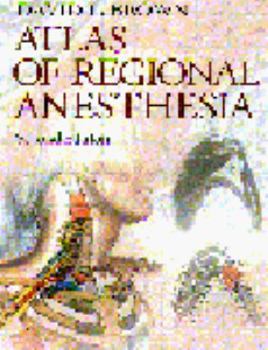Atlas of Regional Anesthesia
Select Format
Select Condition 
Book Overview
The updated, revised 2ndedition of this one-of-a-kind, full colour text/atlas helps readers perform nerve blocks accurately and successfully in all regions of the body. Step-by-step illustrations demonstrate each technique in a simple, easy-to-follow manner. An emphasis on cross-sectional anatomy, illustrations of gross and surface anatomy, and CT and MRI scans help the reader develop a 3-dimensional concept of anatomy essential to successful regional anaesthesia.Covers upper extremity blocks such as the intersclene and supraclavicular, the stellate ganglion block, the celiac plexus block, and much more.Organises blocks by regions to provide quick and easy access to techniques.
Suggests what drugs to use and their dosages to attain the best results.Includes a chapter on local anaesthetic agents and equipment used for regional anaesthesia.
Arranges information under 3 headings for easy reference and applications: Perspectives (patient selection criteria and pharmacologic choices), Placement (anatomy, position, needle puncture, and potential problems), and Pearls(tips from experienced practitioners).Features colour illustrations of cross-sectional, gross, and surface anatomy, as well as CT and MRI scans.Presents new chapters on infraclacicular block, cervical epidural block, thoracic epidural block, facet injections, superior hypogastric plexus block, and sacroiliac block.
Suggests what drugs to use and their dosages to attain the best results.Includes a chapter on local anaesthetic agents and equipment used for regional anaesthesia.
Arranges information under 3 headings for easy reference and applications: Perspectives (patient selection criteria and pharmacologic choices), Placement (anatomy, position, needle puncture, and potential problems), and Pearls(tips from experienced practitioners).Features colour illustrations of cross-sectional, gross, and surface anatomy, as well as CT and MRI scans.Presents new chapters on infraclacicular block, cervical epidural block, thoracic epidural block, facet injections, superior hypogastric plexus block, and sacroiliac block.
Format:Hardcover
Language:English
ISBN:0721670040
ISBN13:9780721670041
Release Date:January 1999
Publisher:Saunders
Length:392 Pages
Weight:3.80 lbs.
Dimensions:1.0" x 9.0" x 6.0"
Customer Reviews
5 ratings
Image adjustment
Published by Thriftbooks.com User , 18 years ago
"Atlas of Regional Anesthesia" If you superimpose the two images of the arm at page 29, figure 3-2 and 3-3, you will see the interception of the median antebrachial cutaneos n with the C5 dermatome. It counteracts the brachial plexus anatomy. C5 don't supply the "median antebrachial cutaneos n". Araujo, Ricardo MD Anesthesia , Rio de Janeiro, Brazil
NO Photographs
Published by Thriftbooks.com User , 18 years ago
I was disappointed to find no photographs used in this atlas. The diagrams are all drawings. It is not a how-to-do book but a reference book.
beautifully illustrated guide
Published by Thriftbooks.com User , 19 years ago
This book although pricey covers just about every block one could imagine and does it in a way that shows off all the strengths of the atlas-as-textbook. After a general chapter on equipment each section is started with a review of the pertinent anatomy of the region followed by descriptions of the various blocks for that region. Each technique is prefaced with a brief discussion of the 'big picture' of the block, then the local anatomy, positioning of the patient, and placement of the needle is covered. There is a nice little concluding paragraph covering gothchas. Whilst this text is aimed at the trainee/practising anesthetist, others may find it useful. For example fellows in pain management will find all the 'standards' are covered. It's only weakness arises in this context: use of supplemental imaging is not discussed except in facet blocks.
lovely text
Published by Thriftbooks.com User , 23 years ago
I am a CRNAP practicing in an ansethesia group that does a great deal of regional anesthesia. We have developed a library of texts to be used for reference/review. This text is the best of the lot with clear concise illustration and excellent text. If you wish to have just one book to use as a reference, this one is it.
Very helpful atlas
Published by Thriftbooks.com User , 24 years ago
very useful book, which contains clinical tips






